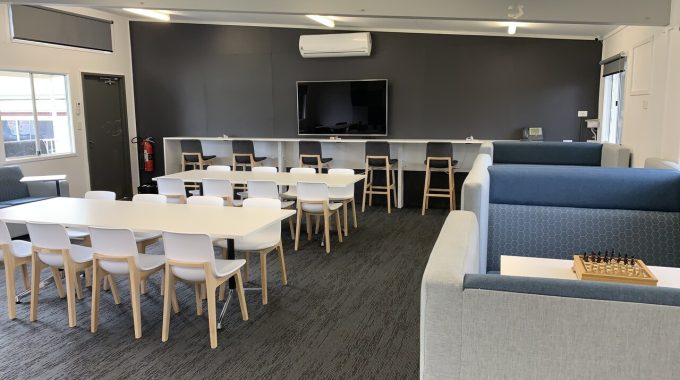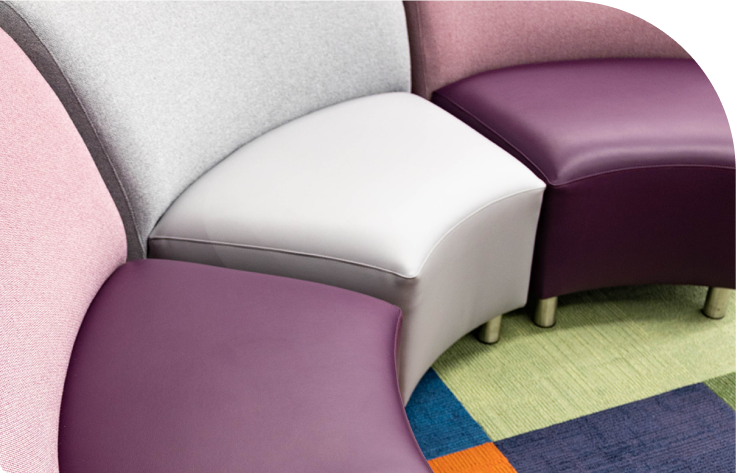How to maintain your classroom furniture and protect it from damage

Effective classroom furniture maintenance strategies can extend the life of your school furniture by 5-10 years while promoting a cleaner, more productive learning environment. Regular care, proper cleaning techniques, and preventative measures help reduce replacement costs and guarantee that students have access to functional, safe furniture throughout their education journey.
Crucial Classroom Furniture Maintenance Strategies
There are some best practices to maintain the cleanliness and longevity of your classroom furniture for students and teachers. School furniture is designed to be both lightweight and durable, built to endure the daily demands of an average active classroom. That being said, it’s important to keep the furniture in good condition, as a well-maintained class set can often serve its users for a decade or more. Here are some simple ways to keep your chairs, tables, and upholstery lasting longer.
Proper Care for Classroom Chairs and Seating
Classroom chairs see a lot of movement in day-to-day teaching activities and so naturally withstand heavy use. Most chairs are made of polypropylene, which is known for being strong and lightweight. Care should be taken with cleaning chairs because of the properties of the plastic, and students should be instructed to let the teacher know of any stains or spills as they happen.
Polypropylene chairs can be easily cleaned with water and a mild solvent, with stains being easier to remove if addressed before they dry. All classroom chairs are built to resist daily wear and tear; however, it is recommended to purchase sets that have thicker plastic and sturdier joints to prevent the shape from warping over long-term use.
Maintaining Tables and Storage Solutions
Wooden tables and storage cupboards are typically coated with melamine, giving them a glossy and stain-resistant finish. A damp cloth mixed with a non-abrasive cleaning product such as an alcohol-based solvent will be enough to handle any common classroom incidents. Even tougher stains such as permanent marker or liquid paper can be cleaned by placing a cloth dampened with a small amount of solvent onto the stain and letting it sit until the mark dissolves.
Avoid vigourous scrubbing, especially with scouring pads or steel wool, as well as harsh solvents such as acetone, as these can damage the finish and make the surface vulnerable to discoloration. Students should also be mindful with abrasive objects such as nail files or metal rulers to avoid scratches.
Special Considerations for Upholstered Furniture
Leather and fabric upholstery is best kept for staff-only environments, as maintenance can be more challenging. Spills and stains on fabric must be addressed immediately, and over-wetting or overuse of soaps can create rings that are more noticeable than the original stain.
Regular vacuuming and de-pilling for fabrics is enough to account for everyday use.
Extending the Lifespan of Classroom Furniture
Regular maintenance can greatly extend the lifespan of your classroom furniture and protect your school’s investment. Consistent preventative care not only keeps furniture looking better but also guarantees it remains functional and safe for students for many years.
Seasonal Maintenance Schedule for School Furniture
Creating a seasonal maintenance schedule allows you to address potential issues before they become serious problems. This proactive approach to protecting classroom furniture helps maintain consistent care throughout the academic year.
| Season | Maintenance Tasks | Materials Needed |
| Fall | – Tighten loose screws and bolts
– Check chair and table legs for stability – Apply protective wax to wooden surfaces |
Screwdriver set, furniture wax, soft cloths |
| Winter | – Deep clean upholstery
– Inspect for moisture damage – Apply wood conditioner to prevent drying |
Upholstery cleaner, wood conditioner, microfiber cloths |
| Spring | – Thorough cleaning of all surfaces
– Check for winter damage – Repair any minor issues |
All-purpose cleaners, repair kits, wood fillers |
| Summer | – Major repairs and refinishing
– Deep cleaning of all furniture – Preventative treatments and protective coatings |
Refinishing supplies, commercial cleaners, protective sprays |
Preventing Damage Through Student Education
Establishing a culture of care among students is critical for preventing damage to school furniture. Developing simple classroom rules about furniture use and providing students with clear guidelines can greatly minimise wear and tear. Consider implementing these strategies:
- Dedicate the first week of school for teaching proper furniture handling techniques
- Place visual reminders about furniture care near high-use areas
- Recognise classes that maintain excellent furniture maintenance habits
- Involve students in basic cleaning routines at the end of each day
With consistent reinforcement, students can take an active role in extending the lifespan of classroom furniture.
Choosing Durable Materials for Long-Term Use
When investing in new classroom furniture, prioritising durable materials is crucial for long-term sustainability. High-quality classroom furniture is made from materials especially designed to withstand daily use in educational settings.
For chairs, choose polypropylene with UV stabilisers to avoid fading and brittleness. Tables benefit from high-pressure laminate surfaces that resist scratches, stains, and damage from common classroom activities. Storage cupboards with melamine finishes offer outstanding durability while maintaining an attractive appearance.
Quality Abax Kingfisher furniture is made using long-lasting materials and construction techniques, making it a perfect investment for schools looking to reduce replacement costs while providing a supportive learning environment.
Professional Maintenance Considerations
These are just a few best practices for the longevity of your school’s furniture. As a general rule, it is best to use milder cleaning products and take preventative measures against stains and scratches to achieve the longest life for your chairs and tables.
If students are taught to respect the school’s property and know the procedures to follow, then school furniture can be expected to last well over a decade with little maintenance.
Purchasing higher quality equipment such as pieces from the Abax Kingfisher line is a good investment.
For more specific furniture solutions, explore our range of classroom chairs, tables, and storage cupboards designed specifically for educational environments. Our extensive selection of chairs meets every classroom need, combining durability with ergonomic design for maximum student comfort and furniture longevity.









